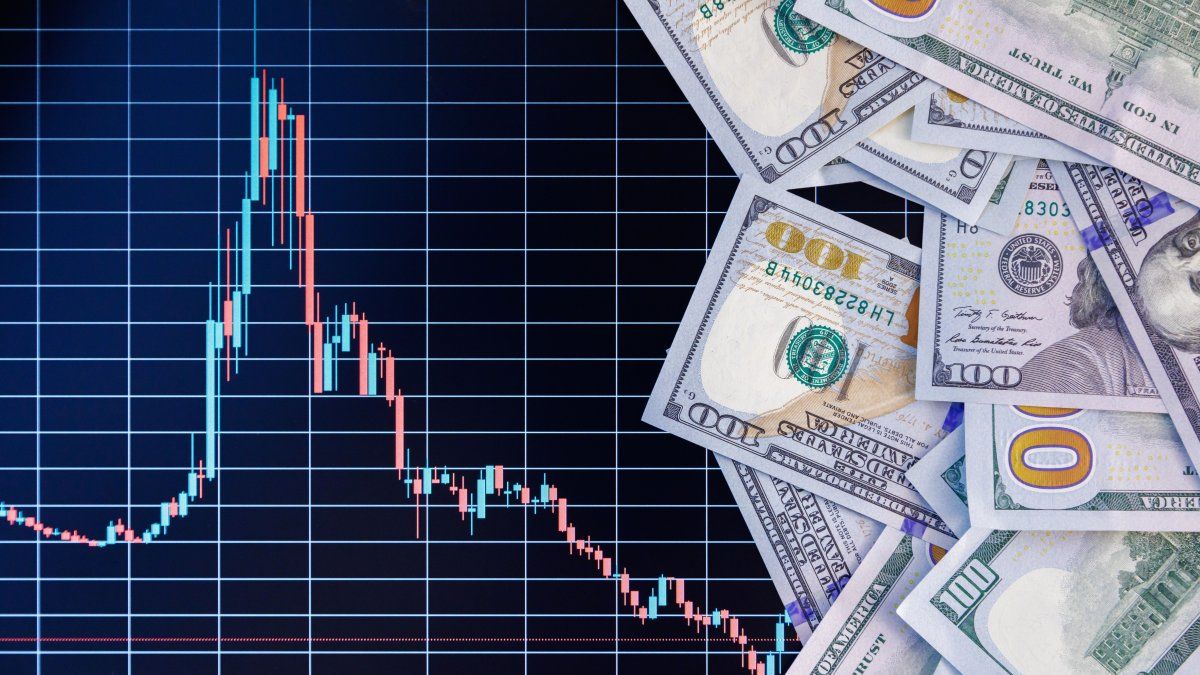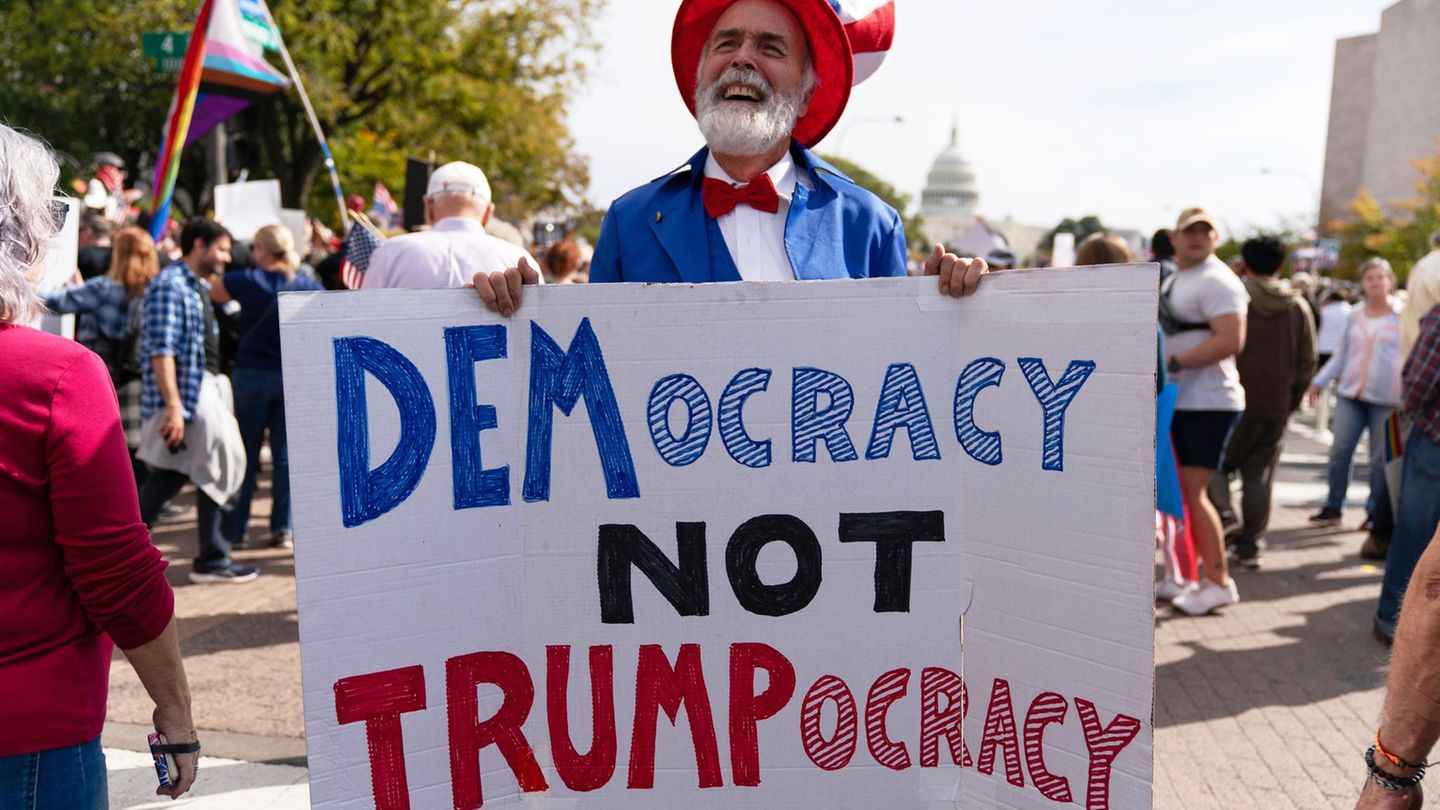The gigantic American public debt market, valued at 29 billion dollars, had already suffered a strong correction on Monday, with one of the most abrupt jumps in the yields of the bonds to 10 years in the last two decades. The bearish trend continued on Tuesday, carrying the reference rate above 4,425%. As usual, yields rise when bond prices fall.
In the early hours of Wednesday, 10 -year performance was around 4,337%. “Many customers have asked us if the treasuries demand is falling both between local and international investors. Although it is difficult to have a precise response in real time, The macroeconomic context suggests that both factors may be influencing “wrote Meghan Swiber, strata of interest rates in Bank of America.
Volatility was not limited to the United States. In Japan, the 30 -year government bonus yield reached its highest level in 21 years, reflecting pressure on global markets.
According to Reuters reports, Institutional investors, including coverage funds, are quickly selling liquid assets such as treasure bonds to cover margin calls, forced by accumulated losses in other classes of assets. To this is added the perception that tariffs imposed by Trump could feed inflation, thus making any possible rate cut by the Federal Reserve, despite fears for an economic slowdown.
“The factors behind the weakness of the Treasury are multiple: an inflation encouraged by tariffs, the growing fiscal deficit, the fall in foreign appetite by US assets and the forced disarmament of leverage operations,” said Vital Knowledge analysts in a note to investors.
Donald Trump sign
According to reuters reports, institutional investors, including coverage funds, are quickly selling liquid assets such as Treasury Bonds
New Trump Tariffs come into force
This Wednesday a new batch of Trump promoted, which includes new measures on Chinese products, intensifying the global commercial conflict and hitting the mood of the markets.
Since Trump announced his intention to impose more aggressive tariff. The S&P 500 index closed Tuesday below 5,000 points for the first time in almost a year and accumulates a loss of 5.83 billion dollars from the announcement of April 2. They are the greatest losses in four consecutive days since the creation of the index in the 50s.
Despite the collapse, Trump minimized the situation, defending tariffs as a “Bad necessary” to correct commercial imbalances that he considers unfair. However, uncertainty persists: the ex -president himself has said that these measures could be maintained indefinitely or used as a pressure tool to force more favorable agreements with other countries.
The “As under the manga” of China
The magnitude of American fixed income divestments aroused alert signals in global markets. The key question is already beginning to circulate: Is Asia selling? Although Japan remains as the main foreign creditor in the United States, the looks are especially directed towards China.
The Asian giant, second largest American debt holder, was in recent days the main target of the renewed tariff offensive of former president Donald Trump. This Tuesday, Washington raised 104% tariffs applied to Chinese imports, in a commercial escalation that begins to generate implications beyond the trade of goods.
The magnitude and moment of “counterintuitive” sales of treasure bonds – manctually considered refugee assets – fed speculation about possible Chinese retaliation. In a context of strong turbulence in the markets, a coordinated sale of American public debt from Beijing would not only affect bond prices, but also the dollar.
According to Bankinter analysts, This stage could mark the beginning of a dispute that exceeds the commercial area and extends to the Financial Front. “We enter an order that impacts not only on trade, but also in capital flows, geopolitics, economic cycle and tax sustainability,” they said in a report.
From Citi they even warn about a possible paradigm shift: “American debt liquidation may be revealing a new regime in which treasuries no longer act as a global value refuge.”
BNP Paribas Wealth Management also suggests that the commercial war could be transferred to the field of debt. “Markets fear that China and other countries begin to part with treasure bonds as a geopolitical pressure instrument“They said.
Along the same lines, from Kutxabank they emphasize that “sales could be linked to a withdrawal of foreign capital”, which reinforces the hypothesis of a deliberate strategy. In turn, Reuters reported that the Popular Bank of China would have instructed local banks to limit their dollar purchases. While the measure seeks to stop the depreciation of the Yuan, its effect is projected on the US debt market and the price of the green ticket.
An eventual sustained offensive of China on US debt would significantly increase systemic risks. Therefore, analysts agree on the need for Straight monitoring bond market evolution. From Kutxabank they warn that “the attention is put on how the US government will respond to market pressure and if the debt is transformed into the new epicenter of commercial tension.”
Source: Ambito
I am a 24-year-old writer and journalist who has been working in the news industry for the past two years. I write primarily about market news, so if you’re looking for insights into what’s going on in the stock market or economic indicators, you’ve come to the right place. I also dabble in writing articles on lifestyle trends and pop culture news.




